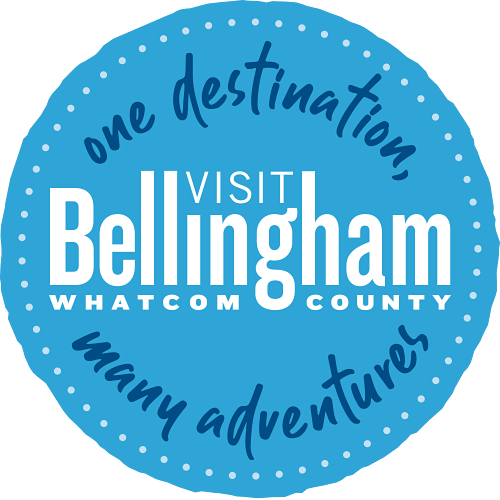Exploring Peace Arch Park - an International Experience
To my surprise, I learned that you can walk freely between US and Canadian borders at Peace Arch Park in Blaine, WA. I've always been curious as to where you can go to the park, so we set out to explore for ourselves. My daughter and I ventured out with bug net in hand to see what we could find in this unique international park.
 "The Peace Arch stands on the international boundary between Blaine, Washington, and Douglas, British Columbia. The Arch was constructed to commemorate the centennial (1814-1914) of the signing of the Treaty of Ghent on December 24, 1814. The Treaty of Ghent ended the war of 1812 between the United States and Great Britain, a conflict that was waged in North America and involved Canadians, as well as Americans and British." - PeaceArchPark.org.
Walking around the park, you'll be on a scavenger hunt of sorts finding numerous interesting historical markers, each with their own story and relative significance. On the US-side is a classic commemorative of the National Garden Club's Blue Star Memorial Highway- A tribute to the Armed Forces that have defended the USA.
"The Peace Arch stands on the international boundary between Blaine, Washington, and Douglas, British Columbia. The Arch was constructed to commemorate the centennial (1814-1914) of the signing of the Treaty of Ghent on December 24, 1814. The Treaty of Ghent ended the war of 1812 between the United States and Great Britain, a conflict that was waged in North America and involved Canadians, as well as Americans and British." - PeaceArchPark.org.
Walking around the park, you'll be on a scavenger hunt of sorts finding numerous interesting historical markers, each with their own story and relative significance. On the US-side is a classic commemorative of the National Garden Club's Blue Star Memorial Highway- A tribute to the Armed Forces that have defended the USA.
 An obelisk marks the location of the border and another is seen in the distance, set in the foreground of the railroad's border sign. There's no mistaking where you are when you look around.
An obelisk marks the location of the border and another is seen in the distance, set in the foreground of the railroad's border sign. There's no mistaking where you are when you look around.
 "In 1914, the international fund-raising efforts for the Arch were spearheaded by Samuel Hill, famed Washington State lawyer, financier, road builder and humanitarian, who later dedicated it on September 6, 1921." - PeaceArchPark.org. An aging sign on the Canadian side adds: Through their donations of pennies, nickels and dimes, the school children of Washington State and British Columbia helped to purchase the lands surrounding the Peace Arch for an International Park. Today 16 hectares (39 acres) of gardens are jointly managed by Washington State Parks and British Columbia Provincial Parks.
"In 1914, the international fund-raising efforts for the Arch were spearheaded by Samuel Hill, famed Washington State lawyer, financier, road builder and humanitarian, who later dedicated it on September 6, 1921." - PeaceArchPark.org. An aging sign on the Canadian side adds: Through their donations of pennies, nickels and dimes, the school children of Washington State and British Columbia helped to purchase the lands surrounding the Peace Arch for an International Park. Today 16 hectares (39 acres) of gardens are jointly managed by Washington State Parks and British Columbia Provincial Parks.
 As we explored the Canadian side, we found a humorous sign with historical significance. First were listed the Basic Ingredients and then recipe laid out on how it was assembled. Creatively Canadian.
Basic Ingredients
76 piles
45 tones (50 tons) tension steel
3500 bags of cement
2 iron gates
2 spruce flagpoles
inspirational messages
The grounds of the provincial park are well planned and maintained. Open lawns with sturdy picnic benches, a decorative drinking fountain and a life-size checkerboard are some of the amenities you'll find onsite. Both sides have flowers arranged to create the symbolic national flag.
As we explored the Canadian side, we found a humorous sign with historical significance. First were listed the Basic Ingredients and then recipe laid out on how it was assembled. Creatively Canadian.
Basic Ingredients
76 piles
45 tones (50 tons) tension steel
3500 bags of cement
2 iron gates
2 spruce flagpoles
inspirational messages
The grounds of the provincial park are well planned and maintained. Open lawns with sturdy picnic benches, a decorative drinking fountain and a life-size checkerboard are some of the amenities you'll find onsite. Both sides have flowers arranged to create the symbolic national flag.
 It took us awhile to go from flag to flag. There's so much to see along the way. The border becomes invisible (even though there are plenty of markers) when you're enjoying the park. We were free to run in the open space, sharing our time with other families as we explored the floral, artistic and historical wonders of the park.
Each year, the International Sculpture Exhibition is hosted from May to October. This is one example piece titled Harmony- Friends, acquaintances and colleagues united in cooperation, blending and shining in a fruitful expression of endeavors of Joy and Peace.
It took us awhile to go from flag to flag. There's so much to see along the way. The border becomes invisible (even though there are plenty of markers) when you're enjoying the park. We were free to run in the open space, sharing our time with other families as we explored the floral, artistic and historical wonders of the park.
Each year, the International Sculpture Exhibition is hosted from May to October. This is one example piece titled Harmony- Friends, acquaintances and colleagues united in cooperation, blending and shining in a fruitful expression of endeavors of Joy and Peace.
 Back home on the US side, we had to pose for a picture in front of our own floral flag. You'll notice yet another marker with more significance of the place and the people who have worked to make it all possible, beautiful and accessible.
Back home on the US side, we had to pose for a picture in front of our own floral flag. You'll notice yet another marker with more significance of the place and the people who have worked to make it all possible, beautiful and accessible.
 I can't imagine a more peaceful border crossing. Make a run for the border, then stop and explore.
For reference, the three messages and their sources:
“1814 - Open One Hundred Years - 1914” - Treaty of Ghent was signed in 1814, marking the end of the war between the US and Great Britain
“Brethren Dwelling Together in Unity” - From the 133rd Psalm/Mayflower Compact.
“Children of a Common Mother”- Referring to our common British/French stock.
I can't imagine a more peaceful border crossing. Make a run for the border, then stop and explore.
For reference, the three messages and their sources:
“1814 - Open One Hundred Years - 1914” - Treaty of Ghent was signed in 1814, marking the end of the war between the US and Great Britain
“Brethren Dwelling Together in Unity” - From the 133rd Psalm/Mayflower Compact.
“Children of a Common Mother”- Referring to our common British/French stock.








